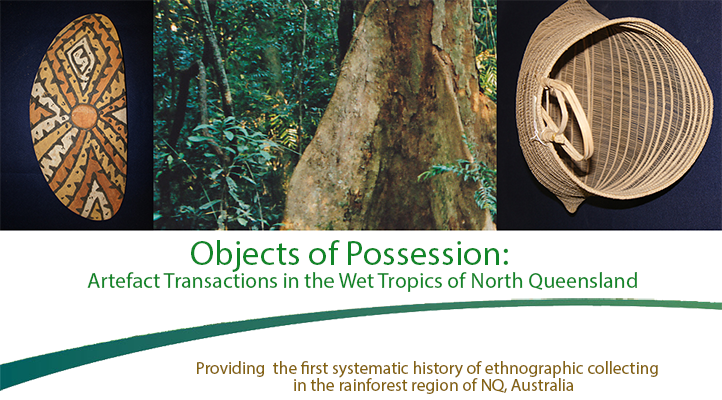
Hermann Klaatsch, Rautenstrauch-Joest Museum, Köln. http://www.museenkoeln.de/rautenstrauch-joest-museum/default.aspx?s=2173
Author: Corinna Erckenbrecht
Collector: Prof. Dr Hermann Klaatsch
Born: 10 March 1863 in Berlin, Prussia
Died: 5 January 1916 in Eisenach, Germany
Active: Klaatsch was in North Queensland briefly in 1904, then made a more substantial visit in early 1905. He collected around Australia between 1904 and 1907.
Background biography: Hermann Klaatsch was a doctor, comparative anatomist and physical anthropologist who came from an old Berlin-based family of doctors. From 1881 onwards he studied at the universities in Berlin and Heidelberg, finishing his studies with his habilitation in 1890. In 1895 he was appointed Professor of Anatomy at Heidelberg University. However, he soon decided to devote his time to more independent research and lectures and travelled widely in Europe (England, France, Belgium and Croatia) in the years between 1896 and 1904.
In February 1904 Klaatsch went to Australia and spent altogether 3 years there, travelling widely all around the continent. Following important hominid findings in Europa and Indonesia (Java) at the end of the 19th century, European physical anthropologists, who were followers of Charles Darwin and his evolutionary theory, discussed the origin of mankind. Klaatsch’s friend and colleague Otto Schoetensack, lecturer in Prehistory at the University of Heidelberg, was convinced that Australia was the homeland of the first human beings and that the human race in fact originated “down under”. The two friends in Heidelberg decided that Klaatsch should travel to Australia to find evidence for this “Out of Australia” theory, Schoetensack not being fit enough for such a long journey because of his poor health. During his travels Klaatsch turned to collecting cultural artefacts as a means of financial support by German Museums of Ethnology (Leipzig, Hamburg, Cologne) which were interested in obtaining new ethnographic artefacts for their incipient collections. Thus, there is a large collection of ethnographic artefacts by Klaatsch kept at German and European museums today.

Klaatsch travelled around Australia from 1904-1907 and stayed in Queensland during his entire first year. At first he was in Brisbane becoming good friends with Walter E. Roth, then he travelled on to the Silver Valley in north Queensland where he stayed in June 1904. From July until October 1904 he travelled around the Gulf of Carpentaria on board the government sailboat “Melbidir“. He returned to Cooktown in October 1904 where he spent one month followed by his time in Cairns from 26thNovember 1904 to 30th January 1905. While there he did 3 excursions to the Bellenden Ker Range deliberately to meet with Aboriginal people in this area and to collect ethnographic artefacts. His first trip was up Harvey’s Creek and Babinda Creek and quite close to the centre peak, Mt. Bartle Frere; the second trip was via Kuranda and Atherton to a gold digger’s camp at Boenje; and the third trip was to Mulgrave and Aloomba and a mountain he called “pyramide mountain”. It was during these intensive travellings and collecting trips that Klaatsch turned to a full time professional collector of cultural artefacts, influenced also by the fact that his other research interests had more or less failed. Moreover, German museums and academic institutions had asked him to collect artefacts for their incipient collections and were willing to pay considerable sums for this, thus helping Klaatsch to finance his stay in Australia.
In February 1905 Klaatsch travelled to Sydney and eventually continued his journey around Australia via Melbourne, Adelaide, Albany, Perth and up the coast of Western Australia, where he interrupted his time in Australia for a 6-months stay on Java. Returning to Broome in May 1906 he continued to Wyndham, Darwin and Melville Island and back again to Sydney, Melbourne, Tasmania and Adelaide where he attended the conference of the “Australasian Association for the Advancement of Science” in January 1907. In February 1907 Klaatsch left Australia and returned home to Germany via Fiji, Hawaii, Canada and the USA.
Upon his return to Germany in 1907 he was appointed Professor of Anatomy and Anthropology at Breslau University (now Wrocław, Poland) and became involved in the excavation and researching of human fossils in Europe in the following years. Quite suddenly Klaatsch died in 1916 while staying at Eisenach, being 52 years old.
